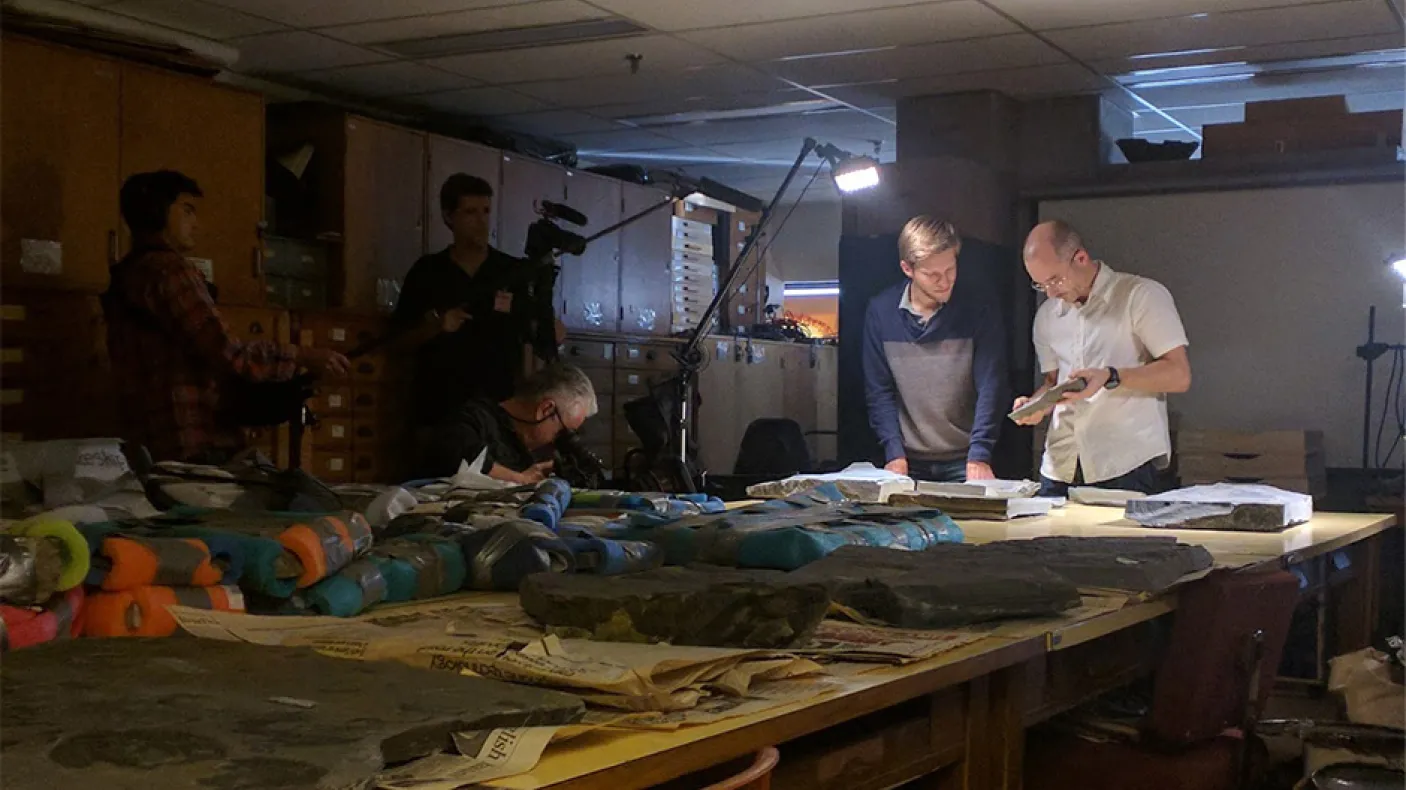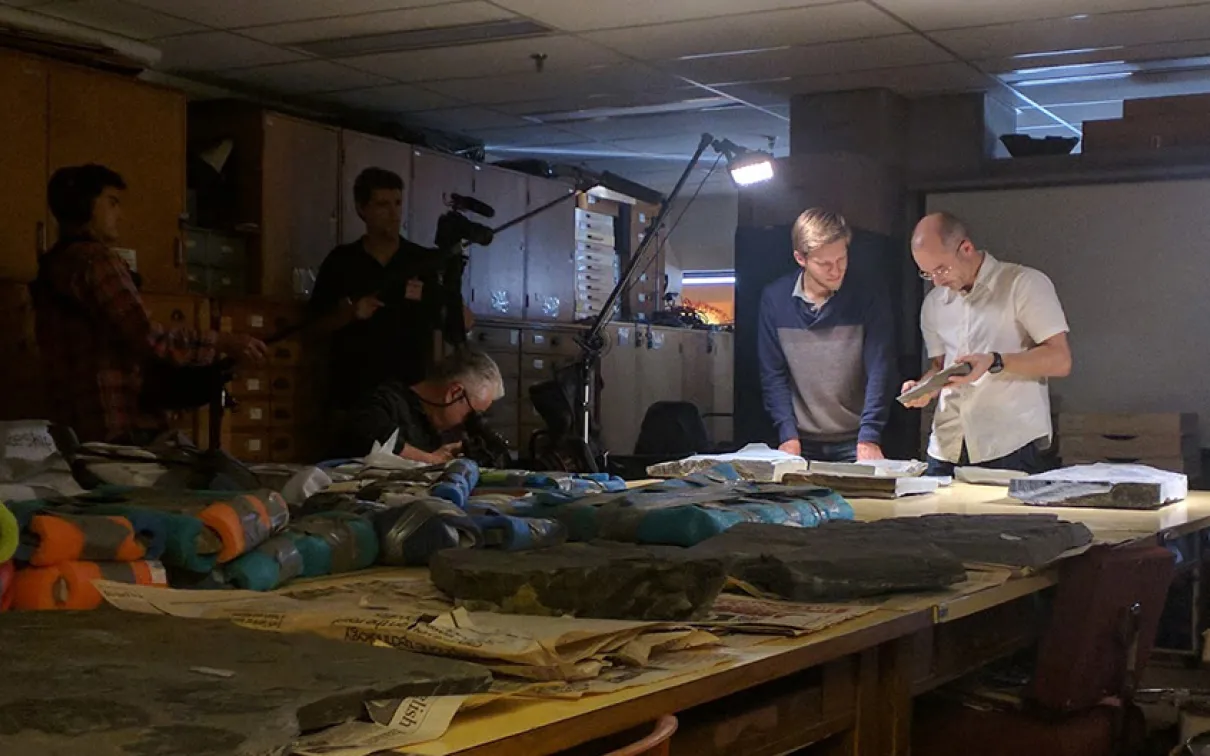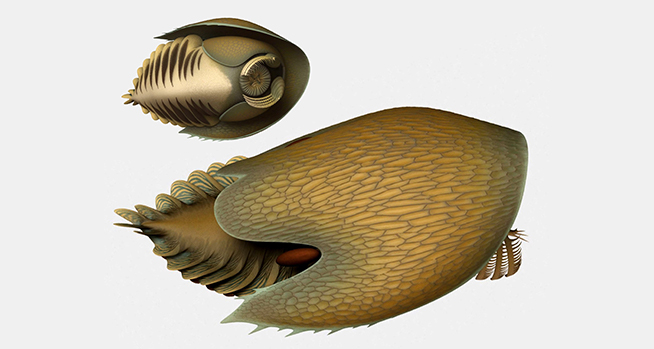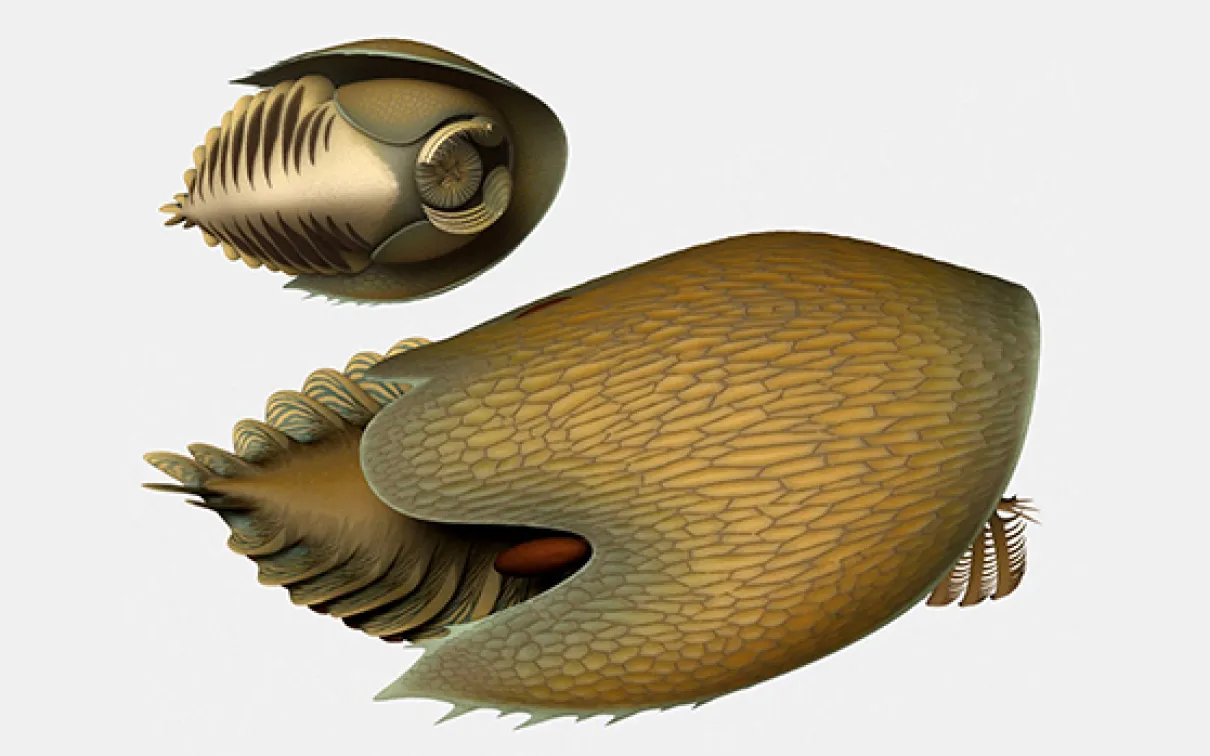Blast From the Past
ROM palaeontologists discover Cambroraster, a voracious new Cambrian predator
Published
Category
Author
With its rake-like claws
With its rake-like claws, pineapple-slice-shaped mouth, and enormous head, Cambroraster falcatus is a small but mighty marine animal that made a big splash when it debuted this summer.
The new species, discovered by ROM researchers, was revealed in the journal Proceedings of the Royal Society B. News of its discovery travelled quickly around the world, captivating news editors and readers alike with the highly detailed illustrations and colourful descriptions of the foot-long organism.
The discovery of Cambroraster is the result of the fieldwork at new quarry sites in Kootenay National Park, B.C., where ROM researchers have been uncovering more secrets from the Burgess Shale, the famous 506-million-year-old rock formation known for its extraordinary fossil preservation.
“We are really excited about this discovery,” says Jean-Bernard Caron, the ROM’s Richard M. Ivey Curator of Invertebrate Palaeontology and Assistant Professor in Ecology & Evolutionary Biology and Earth Sciences at the University of Toronto (U of T). “The large number of parts and unusually complete Cambroraster fossils preserved at the same place are a real coup, as they help us to better understand what these animals looked like and how they lived. Cambroraster clearly illustrates that predation was a big deal at that time, with many kinds of surprising morphological adaptations.”
The study of the Cambroraster fossils
The study of the Cambroraster fossils was led by Joe Moysiuk, a graduate student based at the ROM, who led the study as part of his doctoral research in Ecology & Evolutionary Biology at U of T under Caron. The discovery is significant for the light it sheds on the diversity of the earliest relatives of insects, crabs, spiders, and their kin.
Its specialized mouth apparatus is characteristic of the group Radiodonta, which includes the previously known apex predator Anomalocaris. Radiodonta is considered to be one of the earliest offshoots of the arthropod lineage, which today includes all animals with an exoskeleton, a segmented body, and jointed limbs.
The name Cambroraster refers to the animal’s remarkable claws, which bear a parallel series of outgrowths, looking like forward-directed rakes. “We think it may have used these claws to sift through sediment, trapping buried prey in the net-like array of hooked spines,” explains Caron.
The second part of the species name, falcatus, refers to the shield-like covering over its head. “With its broad head carapace with deep notches accommodating the upward facing eyes, Cambroraster resembles modern, living bottom-dwelling animals like horseshoe crabs,” Moysiuk notes. “This represents a remarkable case of evolutionary convergence in these radiodonts.”
That same carapace also earned the Cambroraster its catchy nickname “spaceship,” thanks to its otherworldly shape.
Katie Bailey
Katie Bailey is Manager of Communications at the ROM.




